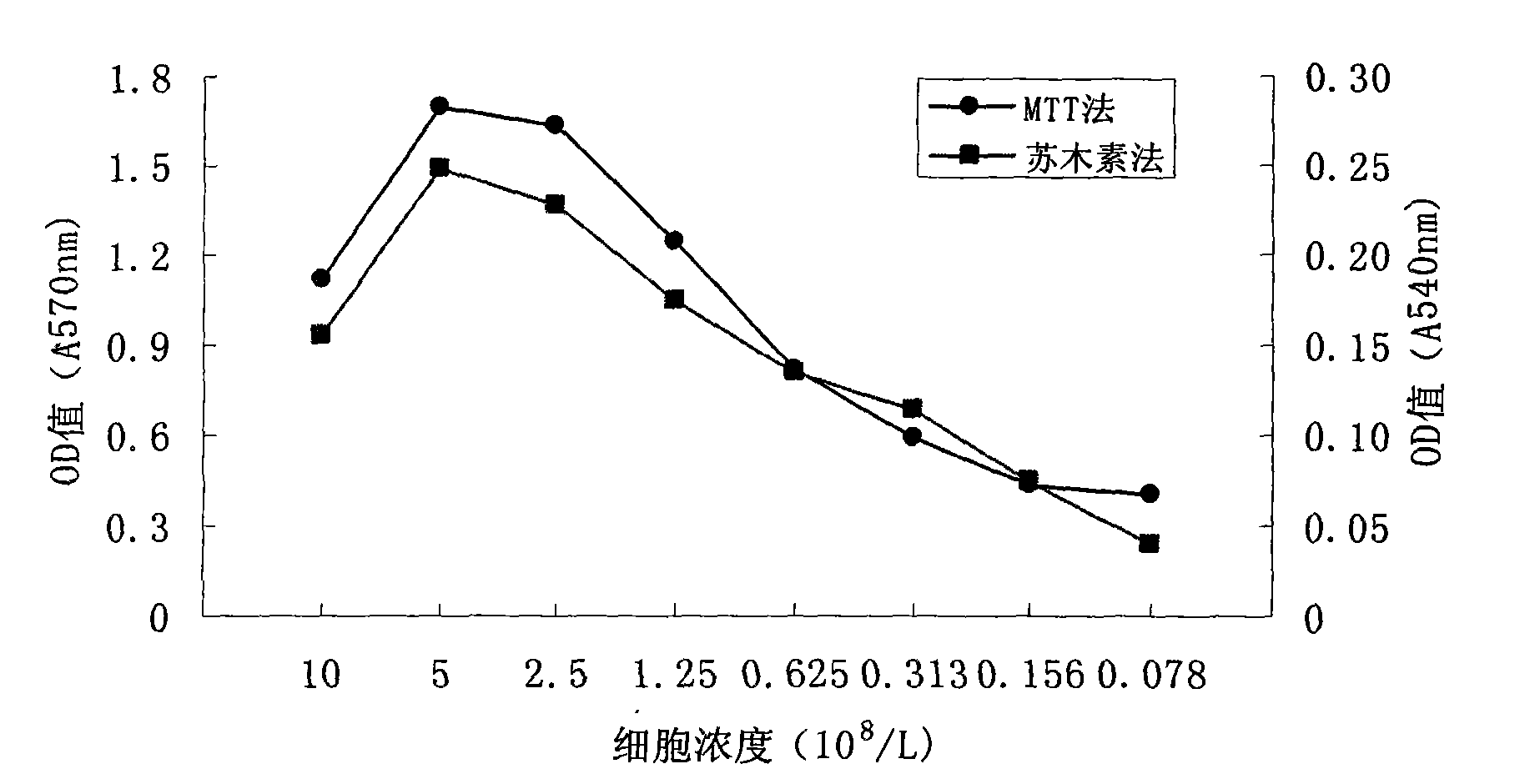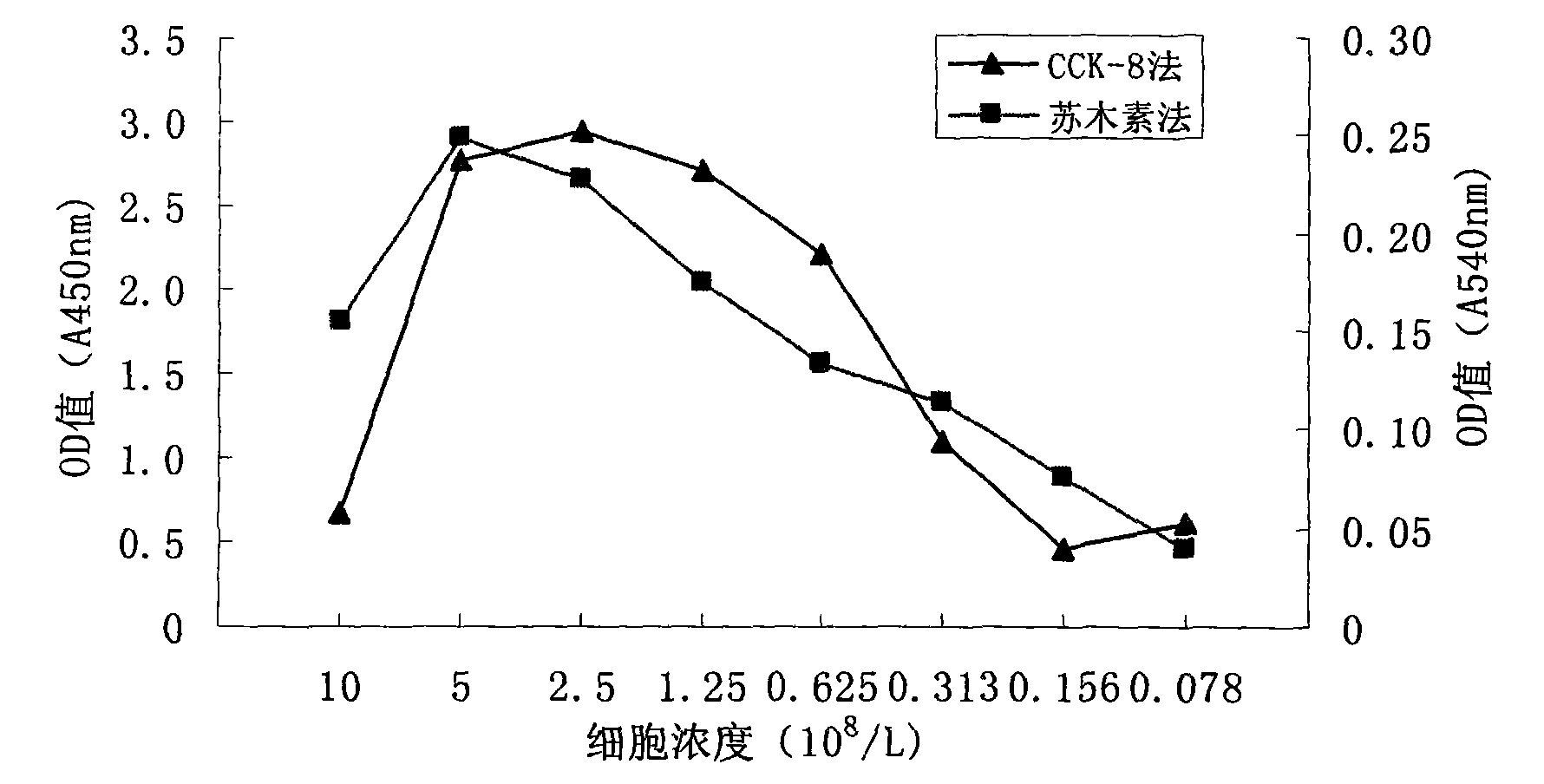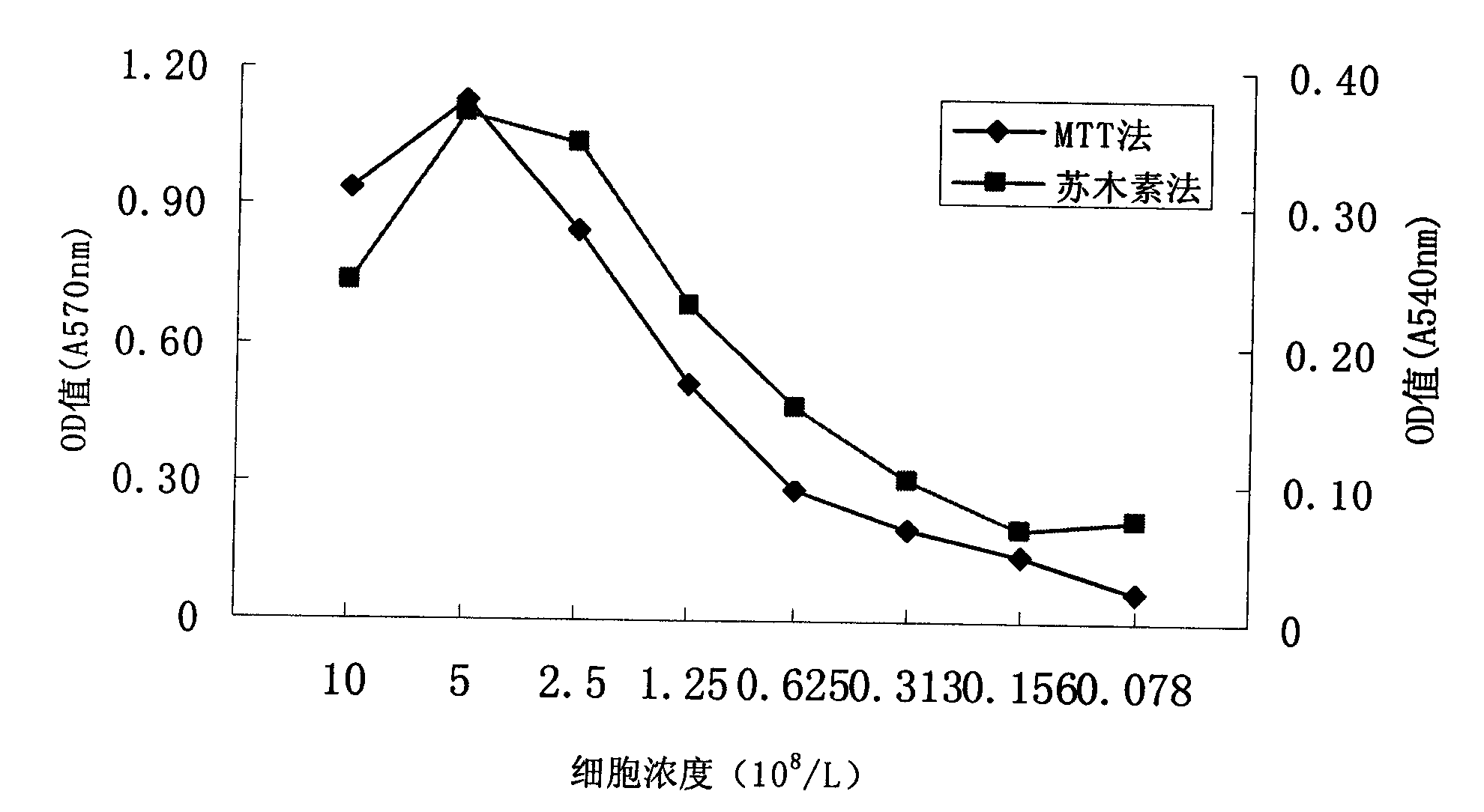Application of hematoxylin in measuring cell multiplication activity and toxic effect of medicine to cells
A cell proliferation and hematoxylin technology is applied in the application field of hematoxylin in the determination of cell proliferation activity and the cytotoxic effect of drugs, which can solve the problems of complex and expensive equipment, non-specific adsorption, unstable results, etc. Good effect and stable test results
- Summary
- Abstract
- Description
- Claims
- Application Information
AI Technical Summary
Problems solved by technology
Method used
Image
Examples
Embodiment 1
[0035] (1) Hematoxylin staining method to detect the proliferation activity of adherent cells, as follows:
[0036]Take 1640 complete medium and add it to a 96-well cell culture plate, 100μl / well. Huvec and M21 cells were digested with 0.25% trypsin, the supernatant was discarded after centrifugation, and the corresponding cell concentration was adjusted with complete medium. Then add 100μl of cell suspension to the corresponding wells of the above 96-well cell culture plate, mix well and dilute by a factor of 2, set 8 dilutions in sequence, 3 replicates for each dilution, and then each well is supplemented with complete medium To 200μl, and set a hole of 1640 medium for the microplate reader to adjust the zero. Place the 96-well cell culture plate at 37°C with a volume fraction of 5% CO 2 Incubate for 44 hours under saturated humidity. Take out the 96-well cell culture plate and discard the supernatant, use an 8-channel micropipette to immediately add 4% paraformaldehyde solution...
Embodiment 2
[0043] (1) Hematoxylin staining method to detect the toxicity of drugs on tumor cell lines
[0044] Take M21, SGC7901 and VX2 cells respectively, digest with 0.25% trypsin and centrifuge, discard the supernatant, adjust the corresponding cell concentration with complete medium, and add them to 96-well cell culture plate in turn, 100 μl / well. Place the 96-well plate at 37°C, 5% CO 2 Incubate overnight under saturated humidity to make it adhere to the wall. Dilute VCR, 5-Fu, CDDP and golden buckwheat extracts in sequence in 5 or 6 different concentrations, and add them to each corresponding well of a 96-well plate, 100μl / well, 3 multiple wells / concentration, and 6-9 wells without Drug cell control and 1 hole 1640 medium microplate reader to zero the hole, the total amount of liquid in each hole is 200μl. Place the 96-well cell culture plate at 37°C and 5% CO 2 Incubate for 44 hours under saturated humidity. Take out the 96-well cell culture plate and discard the supernatant, immedia...
Embodiment 3
[0048] Example 3: CCK-8 colorimetric method to detect the toxic effect of golden buckwheat extract on tumor cells:
[0049] Take M21 and SGC7901 cells respectively, digest and centrifuge with 0.25% trypsin, adjust the corresponding cell concentration with complete medium, and add them to 96-well cell culture plate in turn, 100 μl / well. Place the 96-well plate at 37°C, 5% CO 2 Incubate overnight under saturated humidity to make it adhere to the wall. Dilute the golden buckwheat extract in 6 different concentrations and add them to each corresponding well of a 96-well cell culture plate, 100μl / well, 3 multiple wells / concentration, and a non-drug cell control 6-well and 1-well 1640 medium microplate reader Zero adjustment hole, the total amount of liquid in each hole is 200μl. Place the 96-well cell culture plate at 37°C, 5% CO 2 Incubate in an incubator for 44 hours. Take out the 96-well cell culture plate, gently aspirate 100 μl of supernatant with a micropipette, and then add 10 μ...
PUM
 Login to View More
Login to View More Abstract
Description
Claims
Application Information
 Login to View More
Login to View More - R&D
- Intellectual Property
- Life Sciences
- Materials
- Tech Scout
- Unparalleled Data Quality
- Higher Quality Content
- 60% Fewer Hallucinations
Browse by: Latest US Patents, China's latest patents, Technical Efficacy Thesaurus, Application Domain, Technology Topic, Popular Technical Reports.
© 2025 PatSnap. All rights reserved.Legal|Privacy policy|Modern Slavery Act Transparency Statement|Sitemap|About US| Contact US: help@patsnap.com



